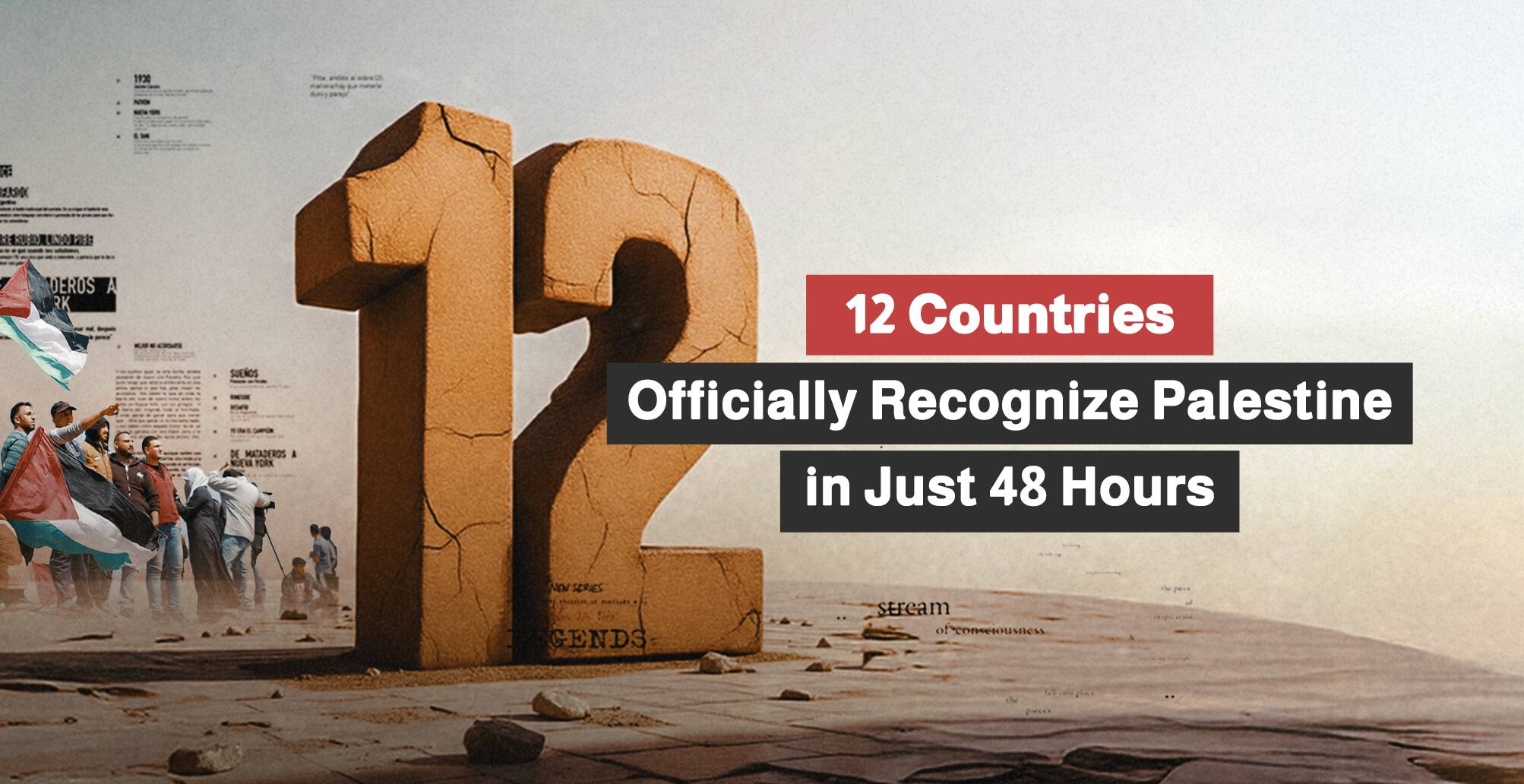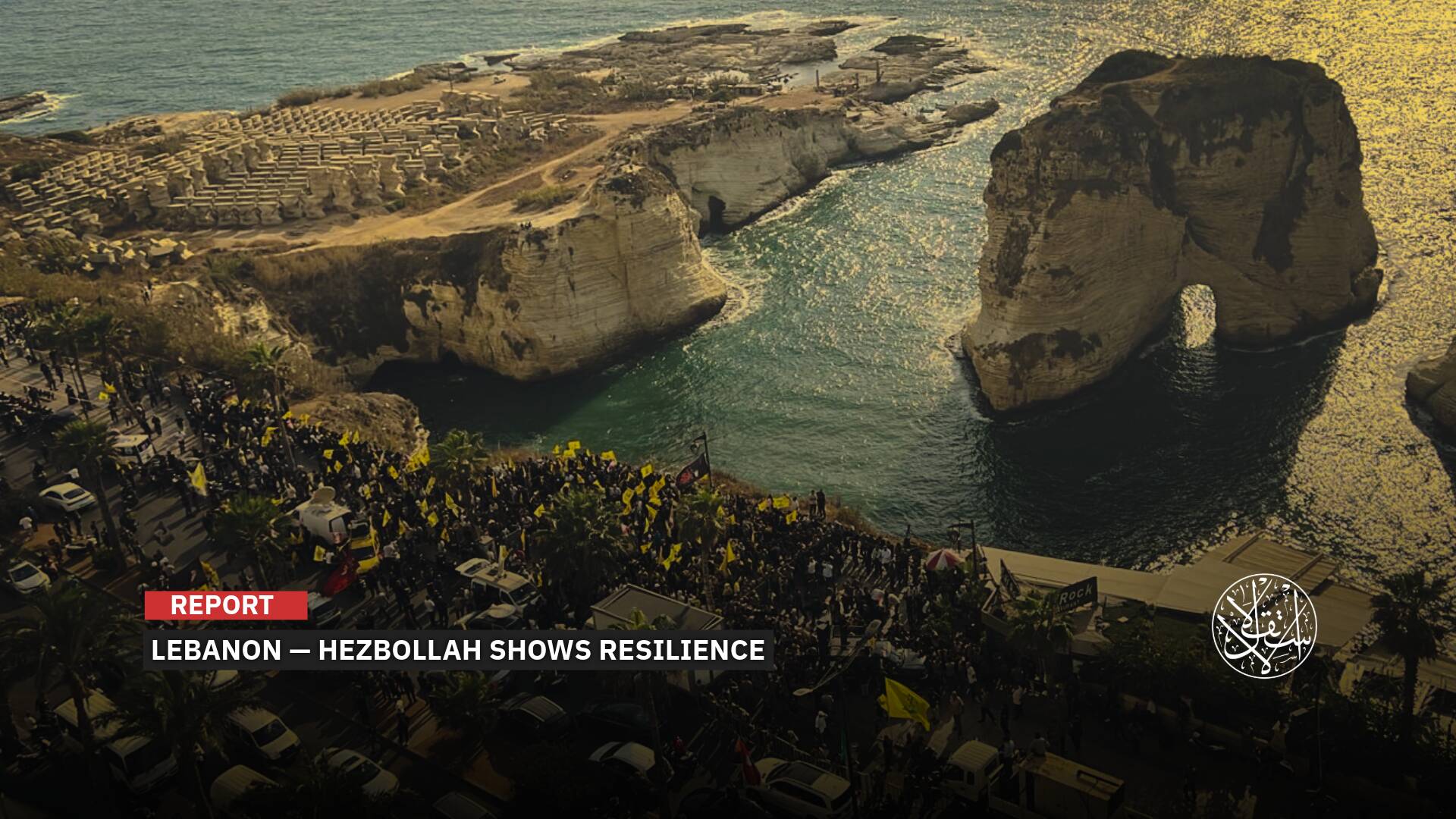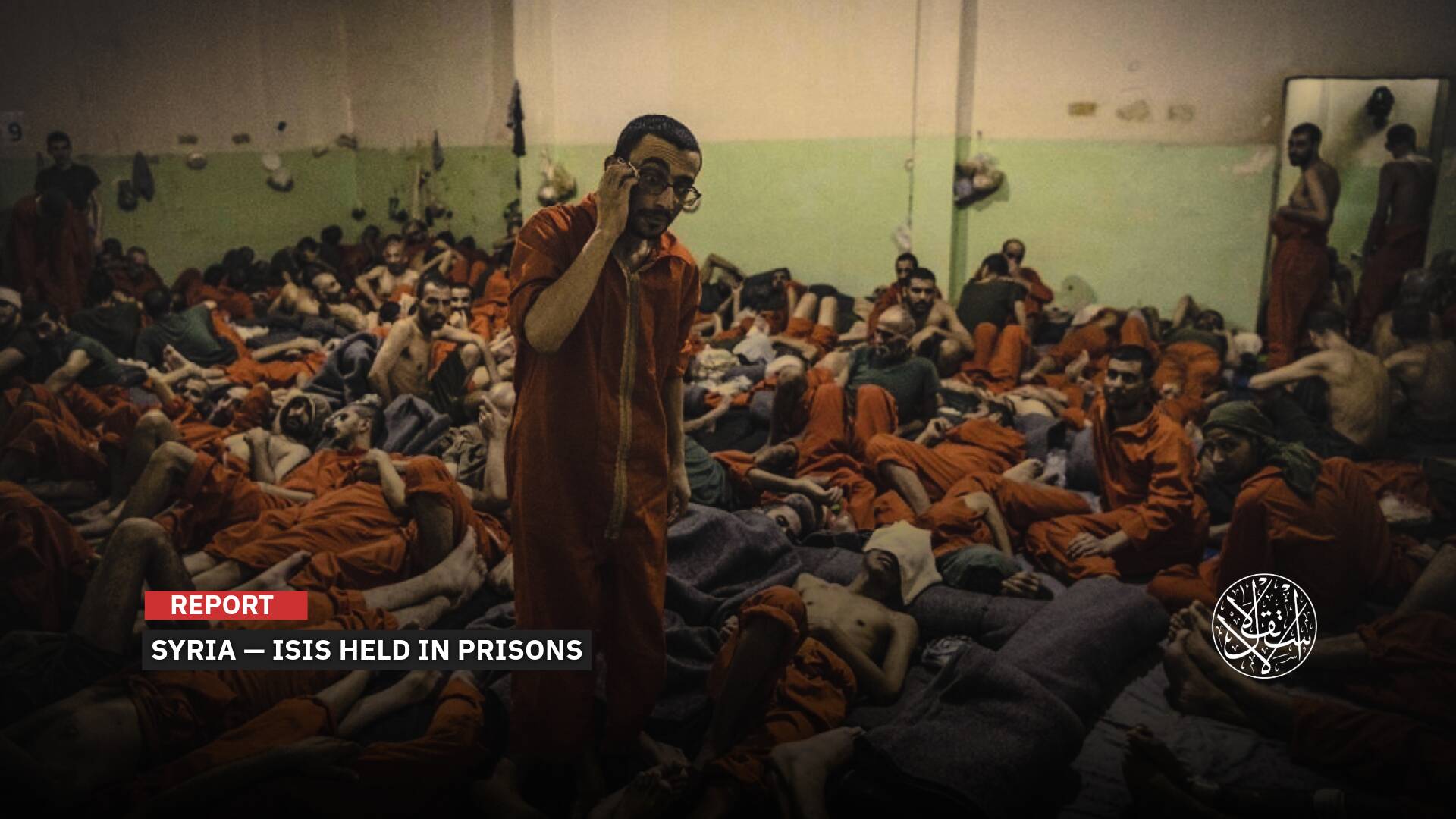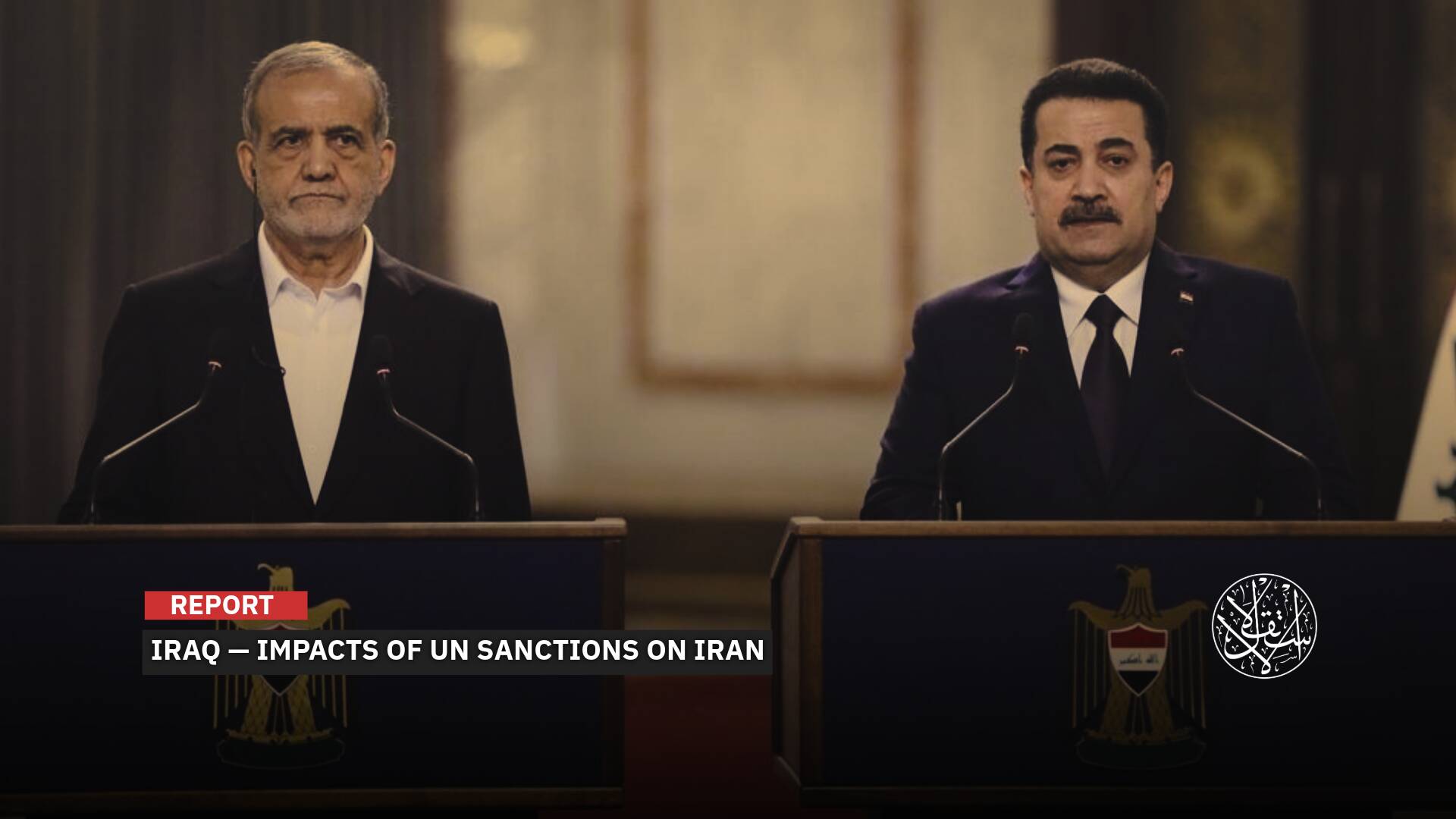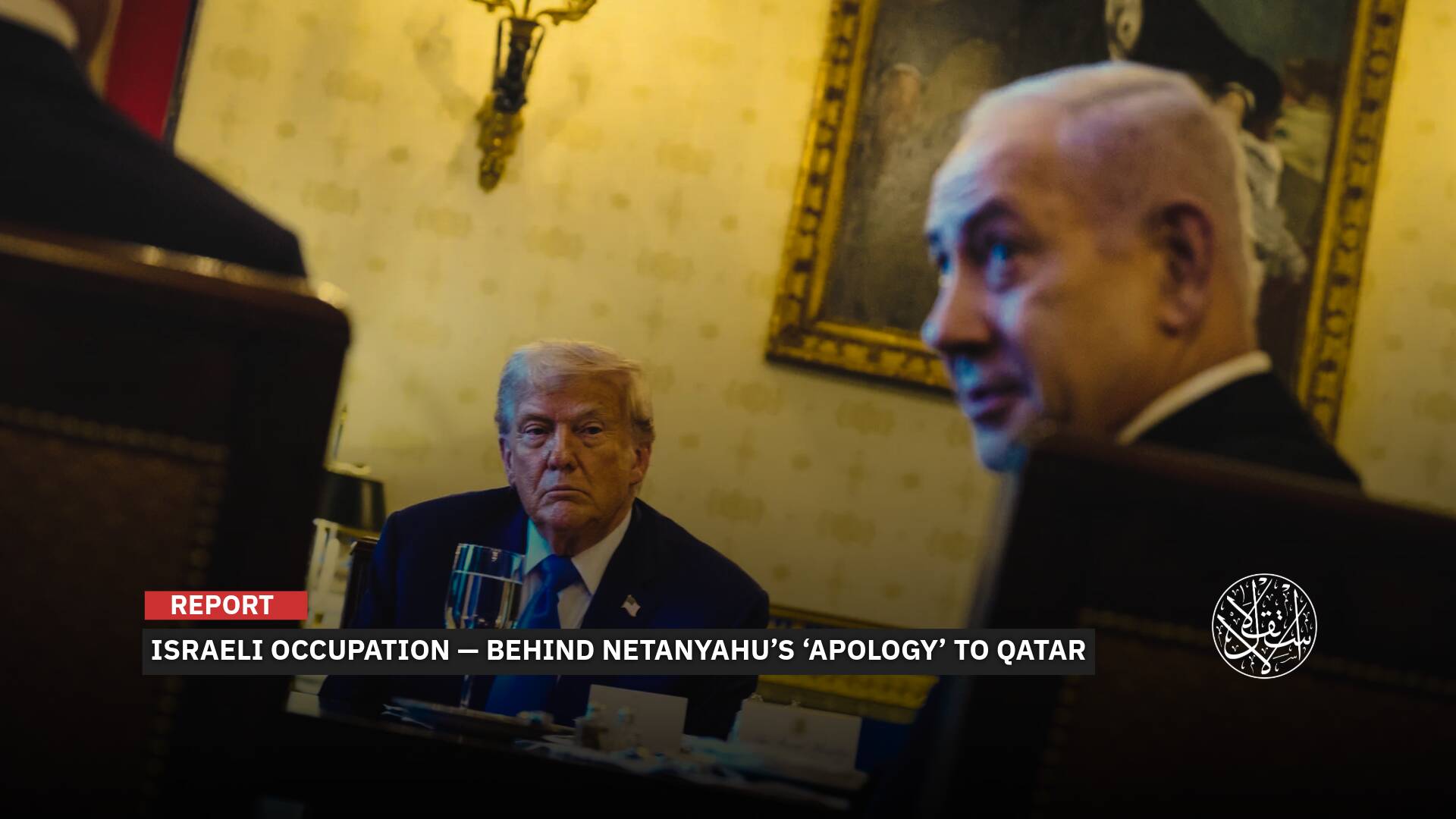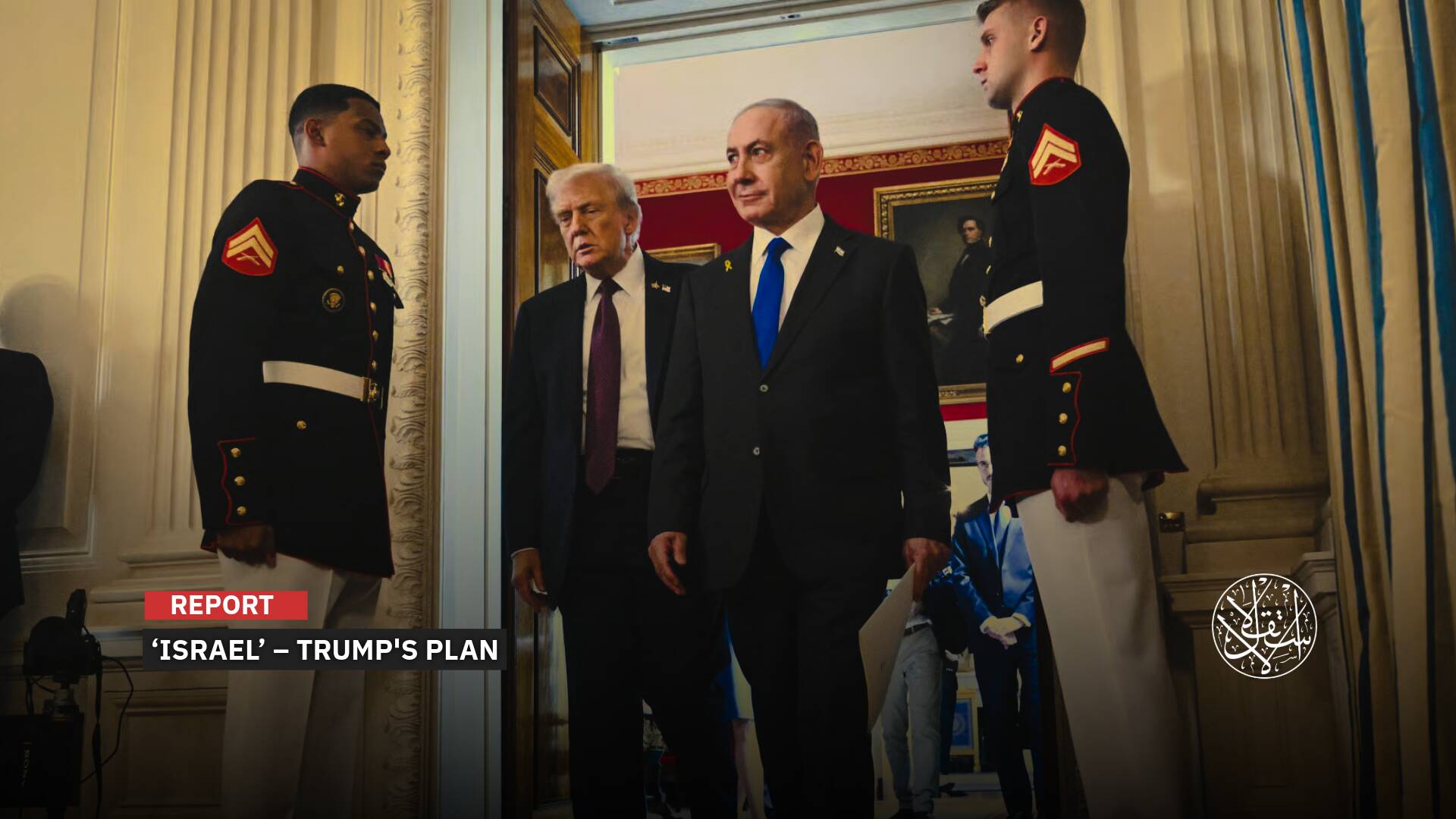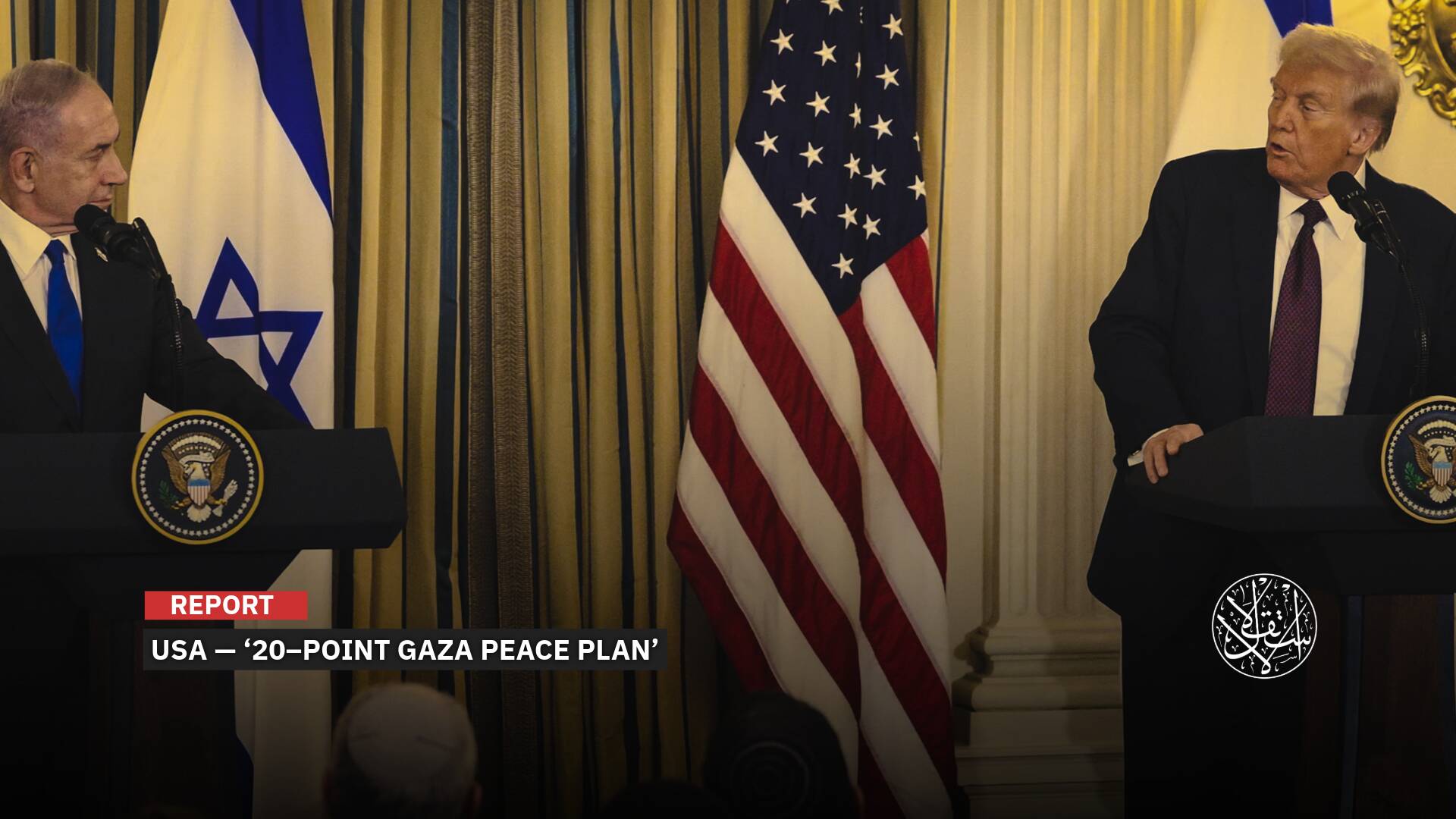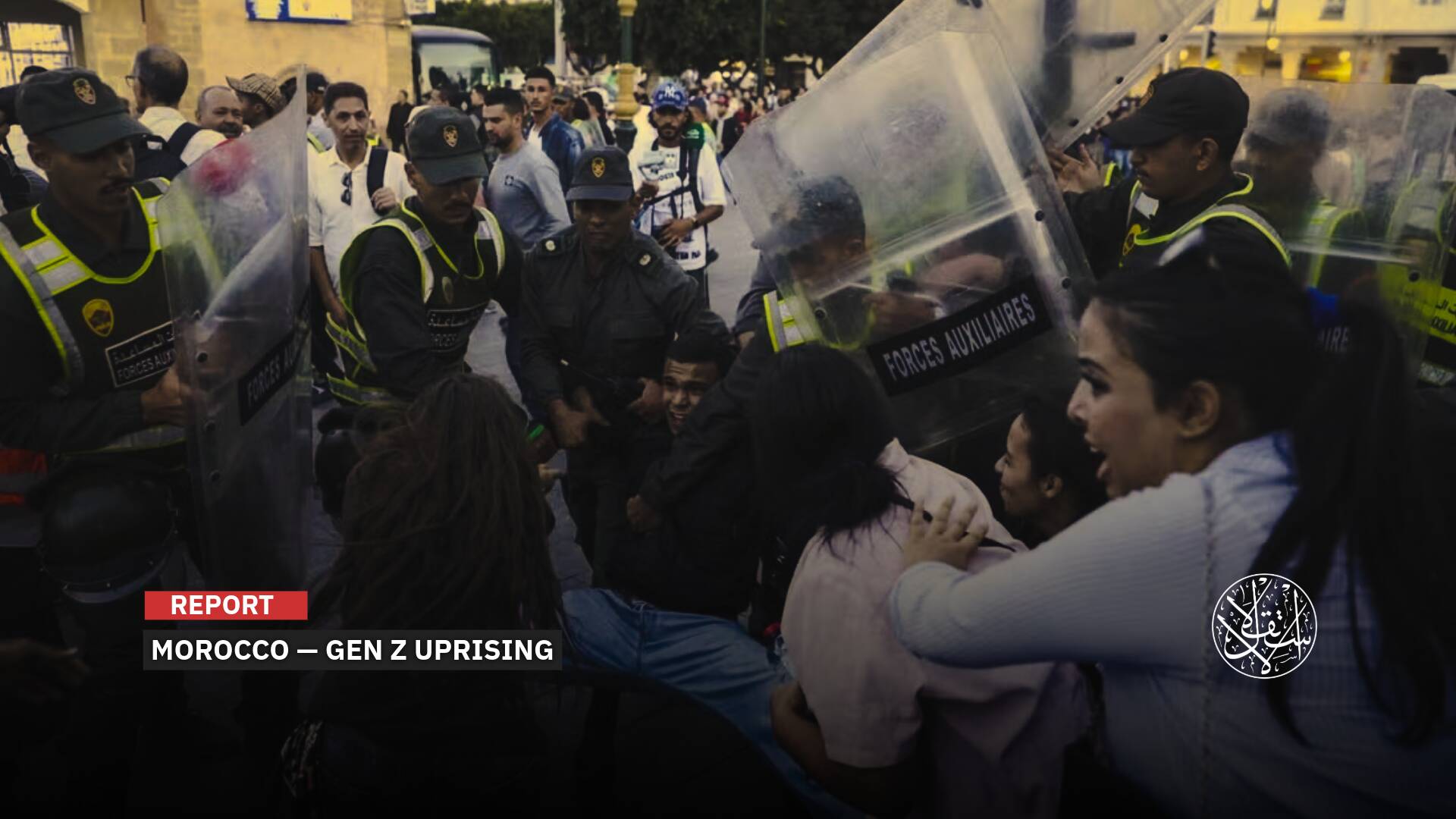Why Trump Once Again Backed ‘Israel’s’ Alleged Sovereignty Over the Golan Heights
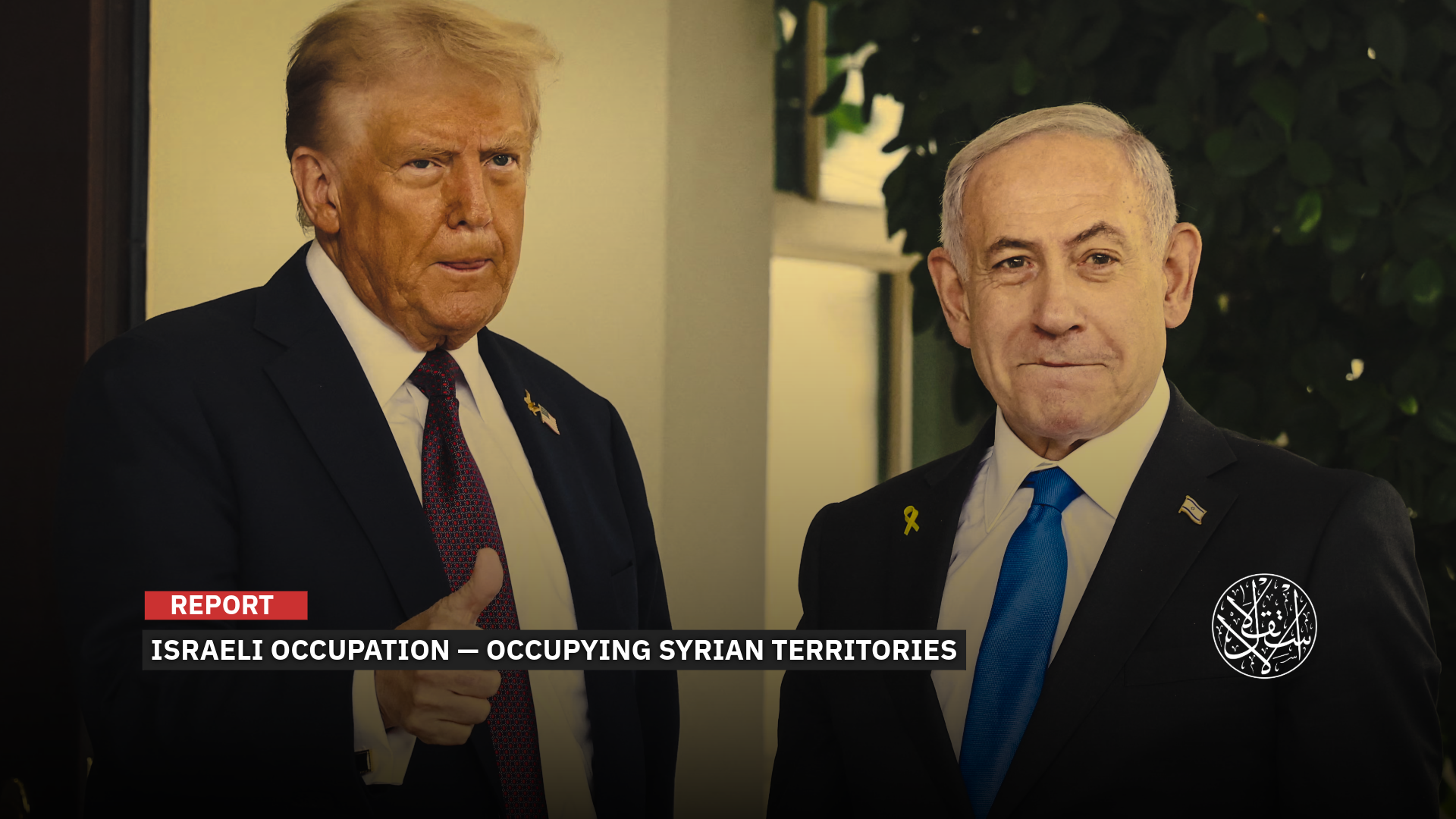
“The Geneva Conventions also prohibit altering the demographic structure of occupied territories.”
U.S. President Donald Trump is pushing to cement the principle of recognizing realities imposed by force in occupied territories, particularly in Syria, raising questions about the legal weight of such moves.
During a joint press conference with Israeli Occupation Prime Minister Benjamin Netanyahu at the White House on September 29, 2025, Trump once again reaffirmed “Israel’s sovereignty” over the Syrian Golan Heights, occupied since 1967.
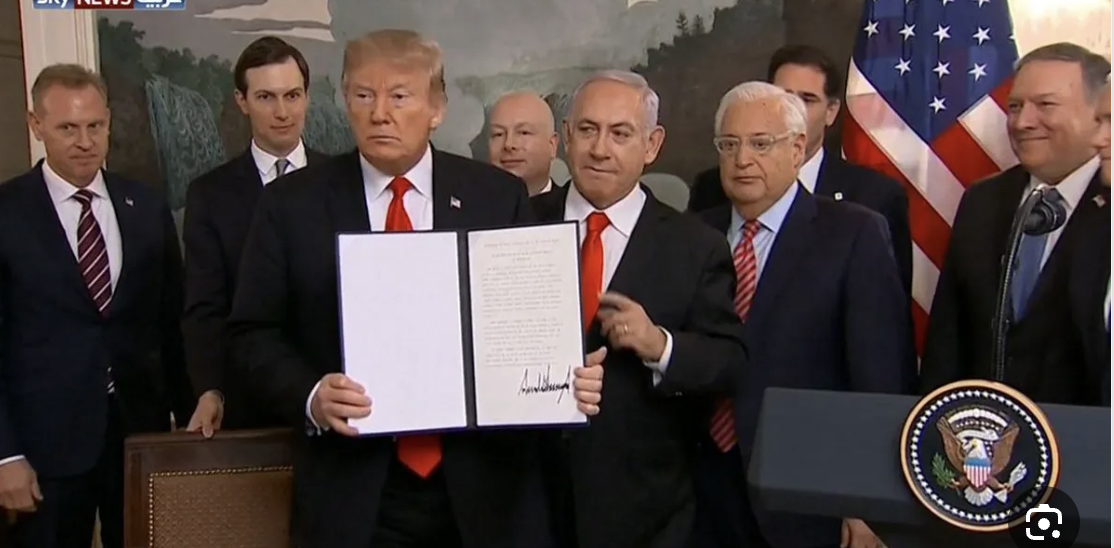
Syrian Response
After Trump reaffirmed “Israel’s sovereignty” over the occupied Golan Heights, the Syrian Foreign Ministry on September 29, 2025, reiterated United Nations Security Council Resolution 497 from 1981.
The resolution addressed a letter from Syria’s permanent representative dated December 14, 1981, and published as document S/14791. It reaffirmed that acquiring territory by force is unacceptable under the UN Charter, international law, and relevant Security Council resolutions.
The resolution declared “Israel’s” imposition of its laws, authority, and administration over the Syrian Golan Heights null and void, carrying no international legal validity. At the time, it called on the Israeli Occupation to reverse its violations immediately and confirmed that all provisions of the Geneva Conventions of August 12, 1949, concerning the protection of civilians during war, remain in effect in the territories “Israel” has occupied by force since June 1967.
On June 5, 1967, the Israeli Occupation launched a war against Egypt, Syria, and Jordan, seizing Occupied East Jerusalem, the West Bank, the Gaza Strip, part of the Syrian Golan Heights, and the Egyptian Sinai Peninsula.
The Golan Heights lie roughly 50 kilometers south of Damascus and cover more than 1,860 square kilometers. In 1981, “Israel’s” parliament, the Knesset, passed a law annexing the territory, but the international community continues to consider it an occupied Syrian land.
Since then, the Israeli Occupation has carried out settlement operations in the area, while the remaining lands face the threat of further Judaization. Before the occupation, the Golan had 164 villages and 146 farms; “Israel” now controls 137 villages and 112 farms.
Today, about 27,000 Israeli Occupation settlers live in 35 settlements across the occupied Golan, alongside 25,000 Syrians residing in five villages: Majdal Shams, Mas’ade, Buq’ata, Ein Qiniya, and Ghajar. Most of the Syrian population are Druze, alongside Circassians, Turkmen, and Bedouins. Before the occupation, roughly 138,000 people lived in the Golan, most of whom fled deeper into Syria.
The Israeli Occupation offered residents the option of Israeli citizenship, but most retained their Syrian nationality. They were granted permanent residency, allowing them to enjoy most rights afforded to Israeli citizens, except voting in Knesset elections or holding Israeli passports.

Shuffling the Deck
On March 15, 2019, during his first term in office, Donald Trump signed a declaration recognizing “Israel’s full sovereignty” over the Golan Heights, which “Israel” occupied in 1967 and annexed in 1981—a move the international community does not recognize.
Legal experts have since emphasized that Trump had no legal authority to legitimize the occupation or seize territory by force.
The renewed U.S. recognition of the occupied Golan comes amid ongoing negotiations between Syria and the Israeli Occupation over a new security agreement or revisions to the 1974 Disengagement Agreement signed between the Hafez al-Assad regime and Tel Aviv.
Israeli Prime Minister Benjamin Netanyahu told the United Nations General Assembly on September 26, 2025, that reaching an agreement with the new Syrian government is “possible.”
“The very idea of peace between Israel and Syria seemed unimaginable for decades. But today, we have begun serious negotiations with the new Syrian government,” he said.
“I believe an agreement can be reached that respects Syria’s sovereignty and protects both Israeli security and the security of the minorities in the region, including the Druze minority.”
In late June 2025, Israeli Foreign Minister Gideon Sa’ar stated that “Israel’s” continued presence in the Golan Heights is a key condition for normalizing relations with Syria. Speaking to Israel’s i24NEWS on June 27, Sa’ar said that Syrian recognition of “Israeli sovereignty” over the Golan would be a prerequisite for any future deal with Ahmad al-Sharaa, Syria’s transitional president.
Following the fall of Bashar al-Assad’s regime at the end of 2024, the Israeli Occupation army reportedly deployed the 98th Division, two paratrooper brigades, and special forces to the Syrian border. The Israeli military also continues to dig a deep trench along the border and the ceasefire line with Syria.
“Israel” has expanded its incursions into southern Syria, effectively sidelining the 1974 Disengagement Agreement, with the aim of pressuring Damascus to make concessions on the Golan.
On September 16, 2025, Reuters quoted an Israeli official saying “Israel” floated a proposal to the U.S. special envoy for Syria, Thomas Barrack, that it could withdraw from southern Syria in return for al-Sharaa relinquishing the Golan. According to the official, the proposal is “unfeasible” because any concession on the Golan would undermine President al-Sharaa’s authority. After testing Syria’s response through the U.S. mediator, “Israel” concluded the plan wouldn’t work.
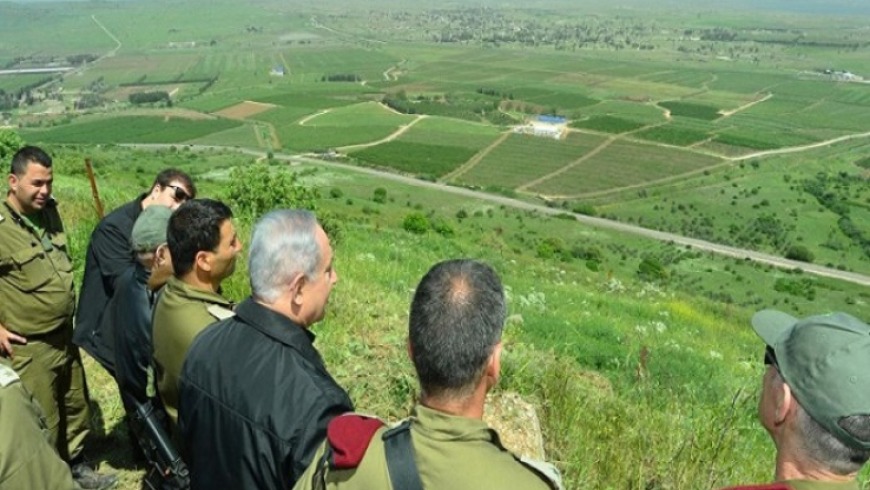
Invalid Recognition
The international community continues to treat the Golan Heights as occupied Syrian territory.
Syrian lawyer and legal expert Abdul Nasser Houshan said Trump’s renewed recognition of “Israel’s sovereignty” over the occupied Golan has no legal value.
“The Golan is Syrian land under occupation, and no one can legitimize this occupation, which is prohibited under international law and United Nations resolutions,” he told Al-Estiklal.
“According to international law and decisions by the global community, the Syrian Golan remains occupied, and any declaration by the United States or others that contradicts this fact is null and does not change its legal status.”
“The UN Charter prohibits seizing land by force and affirms the right of peoples to self-determination,” Houshan added.
He noted that Security Council resolutions 242 and 338 stress withdrawal from territories occupied in 1967, while Resolution 497 explicitly invalidates “Israel’s” annexation of the Golan. The Geneva Conventions also prohibit altering the demographic structure of occupied territories, a practice “Israel” pursues through its settlement.
“Any unilateral recognition of Israeli sovereignty over the Golan carries no legal or political weight because it is occupied Syrian land,” the legal expert said, adding that unilateral moves are doomed to fail, and the Syrian people’s right to reclaim their territory is legitimate and guaranteed under international law.
Houshan stressed that “Israel’s” security concerns do not justify annexing the Golan, and all attempts to defy international law by building settlements and displacing Syrian Arabs cannot change the fact that the plateau will always belong to Syria.
In March 2025, a UN report by Secretary-General Antonio Guterres documented ongoing serious human rights violations by “Israel” in the Syrian Golan, warning of a dangerous escalation in settlement projects, land seizures, and demographic changes.
The report highlighted accelerated settlement activity, including plans to build 30,000 housing units and relocate 250,000 settlers to the Golan over five years, along with the creation of new settlements on the ruins of Syrian villages, including one named “Trump.”
The Israeli Occupation established a new settlement in the Golan called Trump Heights in 2020, accepting applications for permanent housing from thousands of settlers.
The report also noted that “Israel” enforces an inequitable health system, forcing Syrians to pay high insurance premiums for limited services while ignoring demands to build local clinics and hospitals in occupied villages.
In education, the report described attempts to erase Syrian cultural identity by imposing Hebrew curricula, restricting teachers’ participation in external programs, and preventing students from studying at Syrian universities or returning from abroad unless they accept Israeli citizenship.
At the end of 2021, the government of former Prime Minister Naftali Bennett approved a $317 million plan to double the number of Jewish settlers in the occupied Golan, aiming to build 7,300 housing units over five years during a meeting at the Mevo Hama agricultural complex in the region.
Sources
- Sept. 26: PM upbeat on peace with Syria, Lebanon; says victory over Hamas will enable ‘dramatic expansion of Abraham Accords’
- Syrian Foreign Ministry Responds to Trump by Republishing UN Security Council Resolution 497 on the Golan [Arabic]
- Wind Farms and Land Judaization: UN Report Documents Israeli Violations in the Occupied Golan [Arabic]
- After Moving the Embassy to Jerusalem, Trump Recognizes Israel’s Annexation of the Golan, Ignoring Criticism [Arabic]
- Security Council Members Regret Decision by United States to Recognize Israel’s Sovereignty over Occupied Syrian Golan


